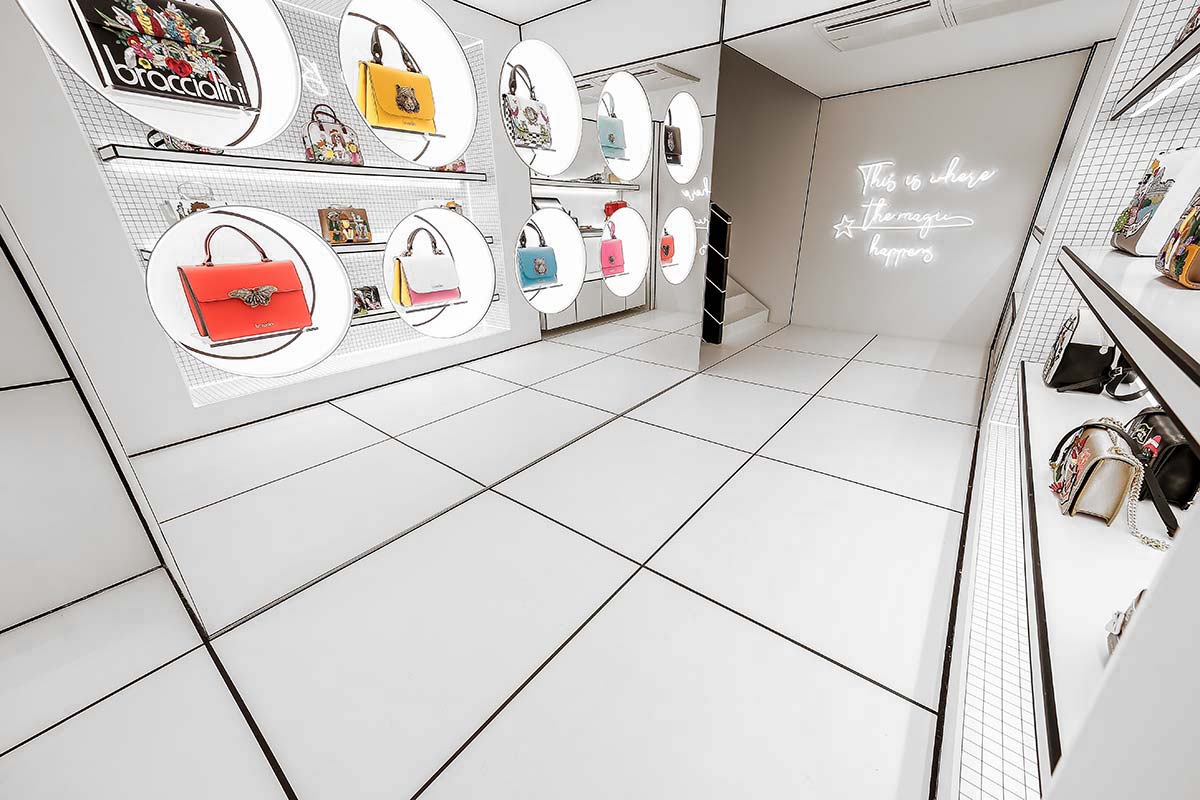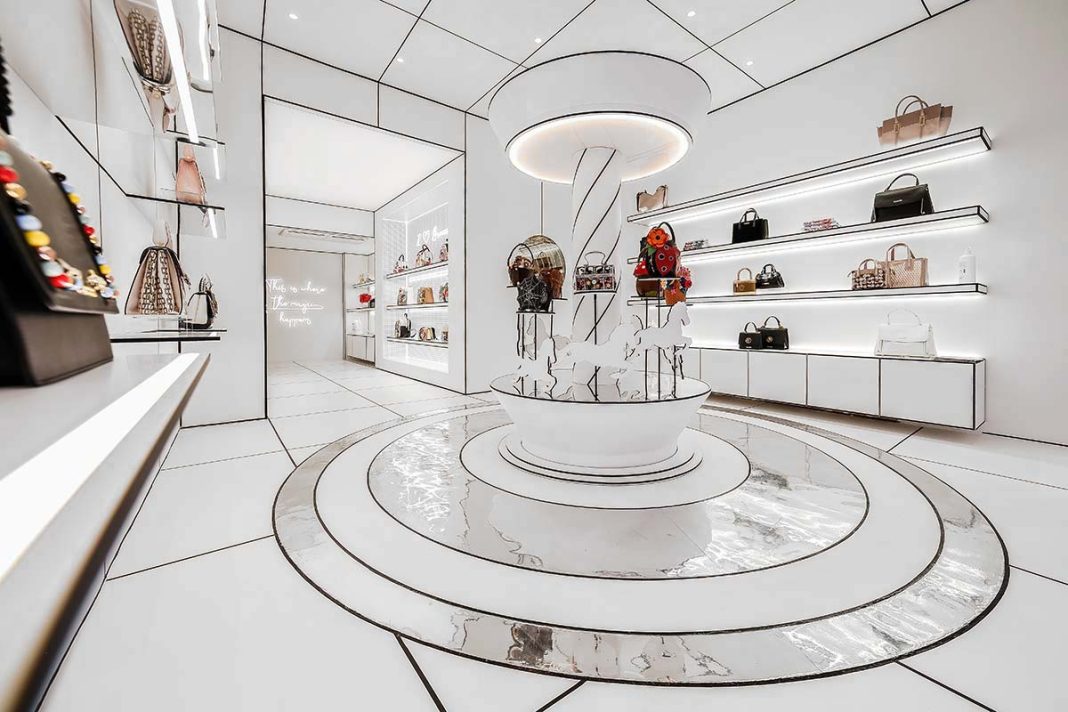“The limit? It’s a game.” This is the creative approach of Emanuele Svetti, who has also designed the latest store for the maison Graziella Braccialini, based on the merger between the art of leather of the Florentine company Braccialini and the fine jewelry of Arezzo-based Graziella Holding. The venue is in Florence, on one of the most prestigious shopping streets in the city. It is a celebration of the brand’s craftsmanship, and the first step in a policy of new national and international openings, as parts of a very precise marketing strategy. With the aim of developing a multichannel concept, combining physical and digital spaces.
The 200 square meters on two levels at Via dei Calzaiuoli, between Piazza Duomo and Piazza della Signoria, have been formulated through dialogue with the existing structural elements – the site is a historical building – without sacrificing the creation of a dreamy container in which to rediscover a carefree spirit.
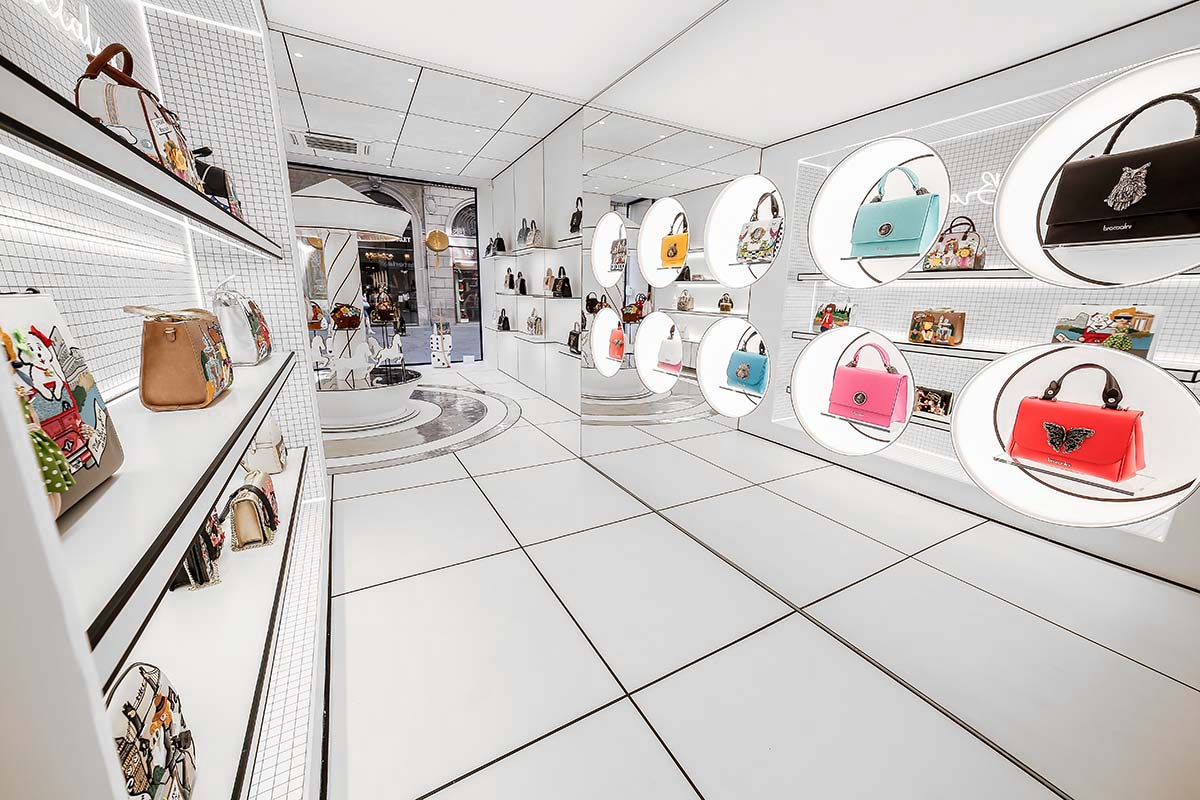

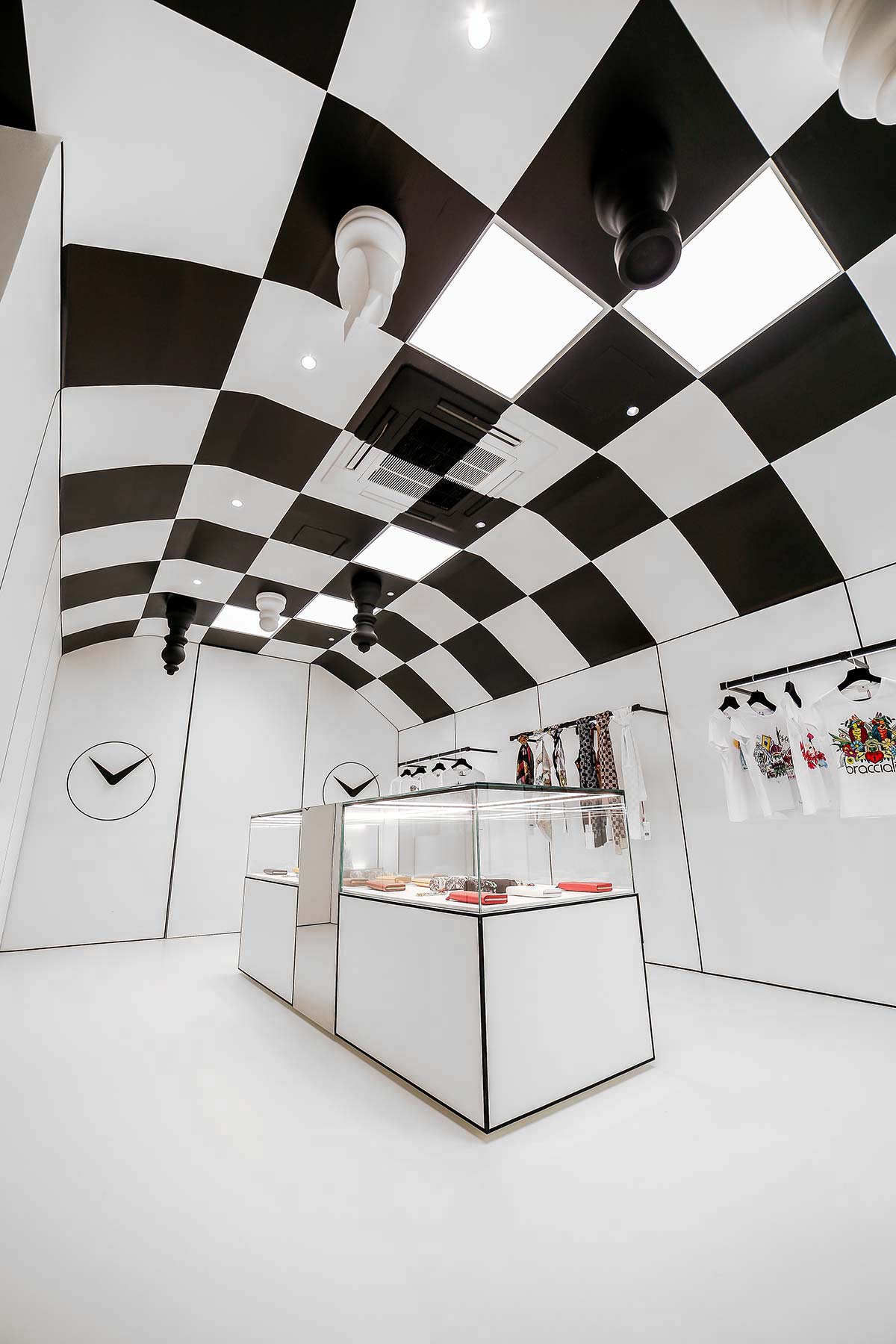
On the first floor, a display fixture in the form of a totem is composed of dice, and transports customers into a storyland experience. The same sensation continues in the adjacent room, where a chessboard is shaped on the existing vault, with game pieces that defy the force of gravity, hanging from the ceiling.
A giant top rises at the center of the ‘Temi di Braccialini’ room, presenting the brand’s iconic collection, underlined by two reflecting surfaces on the ceiling and the floor, facing each other to create a sense of endlessness.

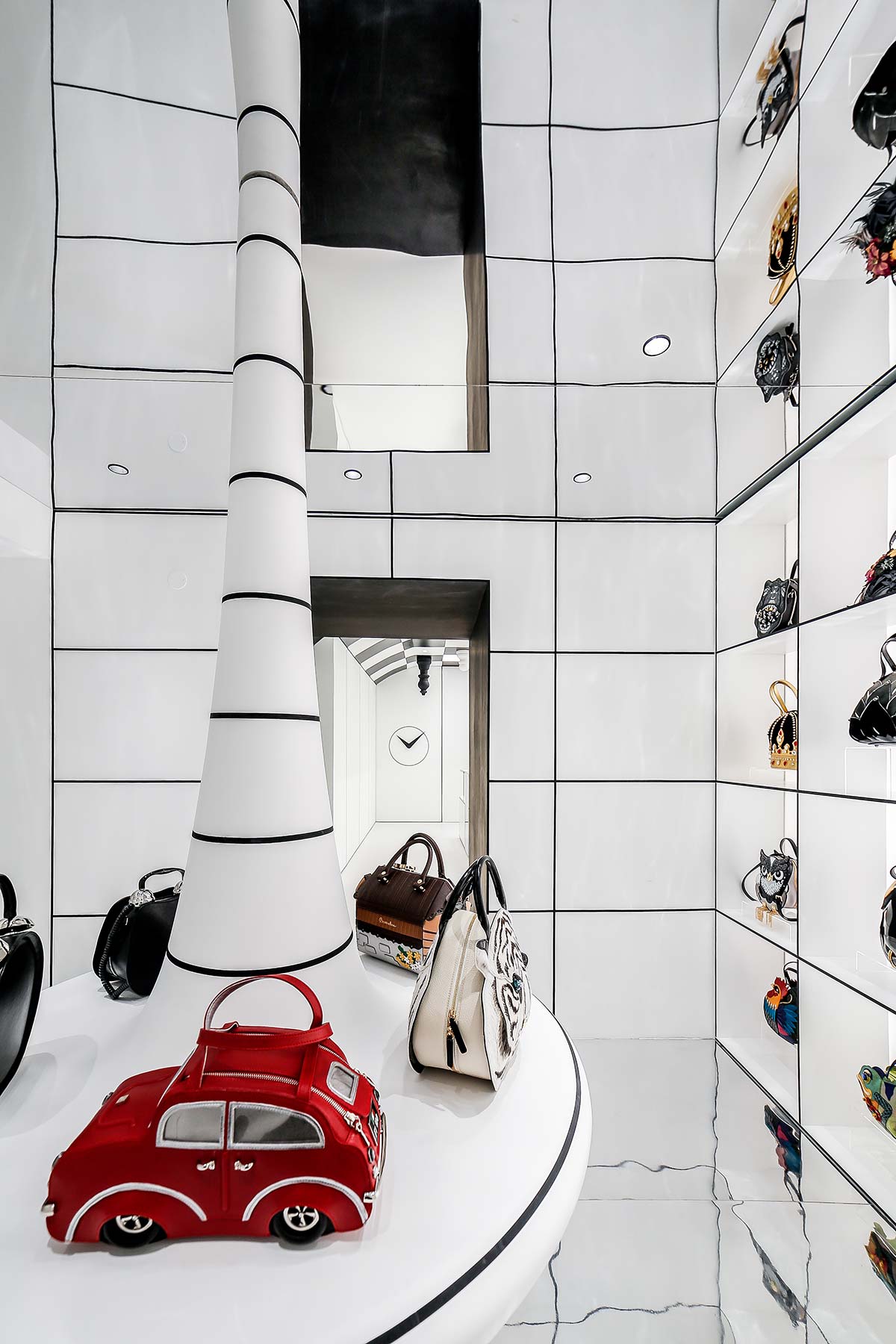

Svetti has chosen white with all its power as the dominant tone, “seen not as absence of color, neutrality, lack of personality,” he says, “but as a forceful, decisive color in its own right,” to set off the colorful Braccialini products. From the pure whiteness, forceful lines are traced to generate display spaces with niches, shelves and portholes: points of attraction and attention, enhanced by the use of light.
The furnishings have also been designed by Studio Svetti specifically for the store in Florence, made with the help of Marchi Interior. Hence the ‘checker’ poufs, the dice-like forms of the seats and displays, the carousel at the center of the retail space, the metal rods and counters for the sale and display of products.
Photo © Varvara Verbitskaya
